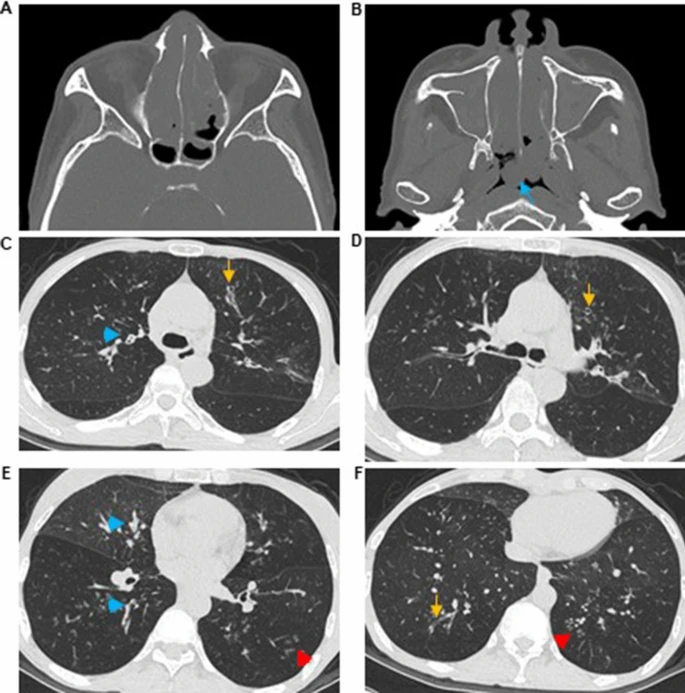Haiyan Sheng, Xiujuan Yao, Xiangdong Wang, Yuhong Wang, Xiaofang Liu & Luo Zhang
BMC Pulmonary Medicine 21, Article number: 211 (2021)
As a typical “united airway” disease, asthma-chronic rhinosinusitis (CRS) overlap has recently drawn more attention. Bronchiectasis is a heterogeneous disease related to a variety of diseases. Whether bronchiectasis exists and correlates with asthma-CRS patients has not been fully elucidated. The purpose of the study was to explore the presence and characteristics of bronchiectasis in patients with overlapping asthma and CRS.
This report describes a prospective study with consecutive asthma-CRS patients.
The diagnosis and severity of bronchiectasis were obtained by thorax high-resolution computed tomography (HRCT), the Smith radiology scale and the Bhalla scoring system. CRS severity was evaluated by paranasal sinus CT and the Lund-Mackay (LM) scoring system. The correlations between bronchiectasis and clinical data, fraction of exhaled nitric oxide, peripheral blood eosinophil counts and lung function were analyzed.Seventy-two (40.91%) of 176 asthma-CRS patients were diagnosed with bronchiectasis. Asthma-CRS patients with overlapping bronchiectasis had a higher incidence rate of nasal polyps (NPs) (P = 0.004), higher LM scores (P = 0.044), higher proportion of ≥ 1 severe exacerbation of asthma in the last 12 months (P = 0.003), lower postbronchodilator forced expiratory volume in one second (FEV1) % predicted (P = 0.006), and elevated peripheral blood eosinophil counts (P = 0.022). Smith and Bhalla scores were shown to correlate positively with NPs and negatively with FEV1% predicted and body mass index. Cutoff values of FEV1% predicted ≤ 71.40%, peripheral blood eosinophil counts > 0.60 × 109/L, presence of NPs, and ≥ 1 severe exacerbation of asthma in the last 12 months were shown to differentiate bronchiectasis in asthma-CRS patients.
Bronchiectasis commonly overlaps in asthma-CRS patients. The coexistence of bronchiectasis predicts a more severe disease subset in terms of asthma and CRS. We suggest that asthma-CRS patients with NPs, severe airflow obstruction, eosinophilic inflammation, and poor asthma control should receive HRCT for the early diagnosis of bronchiectasis.

No comments:
Post a Comment